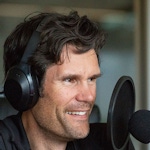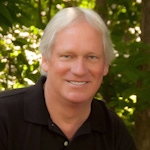We know that dairy isn’t Paleo, but it seems like some believe butter gets a free pass as long as it’s made from grass-fed cows. Are certain kinds of butter Paleo?
The short answer is no. While there are some sources that claim grass-fed butter and ghee are not only Paleo but also good for you, the fact remains that it’s another ingredient on the no-fly list.
Here’s what you need to know about butter, and why we at The Paleo Diet® recommend against including it in your diet.
Why isn’t butter Paleo?
One key guideline of Paleo eating is to avoid dairy. There are a few reasons for this. First, our Paleolithic ancestors did not include dairy in their diet, so it doesn’t fit the technical standards of the diet. Until the dawn of agriculture, dairy products like milk, butter, cheese, and yogurt were never part of our ancestors' menu.
More importantly, cow’s milk—and subsequently, butter—isn’t Paleo because it contains growth hormones and bioactive peptides that are intended for a growing calf—not humans.
Since butter is made from heavy cream, it’s also high in calories. That can quickly add up to unintended weight gain, or make your weight loss efforts harder.
Why Dairy Isn't Paleo
By Loren Cordain, Ph.D.
Is it because of the saturated fat?
Most people avoid butter because of its high saturated fat content. However, that isn’t the main takeaway here.
Contrary to popular belief, recent studies show that there are no beneficial effects of reducing saturated fat to below a level found in a natural Paleo diet, particularly when it comes to cardiovascular disease and total mortality. [1]
So, while saturated fat might have been incorrectly demonized, others have jumped to the conclusion that butter is therefore fine to eat.
What about raw butter?
Don’t be fooled: Raw butter is not Paleo, either!
Raw butter is made from cream that has not been pasteurized. Many people believe that pasteurization kills beneficial enzymes and nutrients and, thus, raw is better. However, the data on this claim is mixed. [2]
Even if raw milk contains more nutrients than its pasteurized counterpoint, it still contains the growth factors found in milk that are meant for a growing calf.
What about ghee?
Despite what you may have heard, clarifying butter doesn’t automatically make it Paleo, either.
Ghee is a clarified butter fat where the nonfat solids are removed by heat and filtration. While it’s true that most of the casein and lactose are removed while making ghee, those same growth hormones and bioactive proteins survive the process.
Plus, ghee contains oxidized cholesterol, which may contribute to heart disease. It’s best to avoid any form of dairy or butter, and cook with coconut oil or olive oil instead!
Butter contains hidden sugars
If you’re still unsure if you should cut butter from the grocery list, it’s important to keep in mind that dairy products contain a high level of sugar.
Don’t be fooled by labels promising “no sugar added'' on your favorite dairy items, like yogurt. Dairy contains naturally occurring sugars, like lactose, all on its own.
Reducing sugar is imperative to manage weight, prevent heart disease, reduce inflammation, and prevent diabetes, amongst many other health benefits. It’s part of the reason why The Paleo Diet strongly recommends reducing sugar consumption.
Effects of eating butter
Dairy has a way of wreaking havoc on our bodies, and butter is no exception. While some people may tolerate dairy better than others, it’s common for people to have a sensitivity to dairy products, especially to lactose.
Symptoms of dairy and lactose intolerances include digestive upset, such as bloating, diarrhea, and gas. [3] It also manifests in unassuming ways like persistent acne, sinus issues, and migraines/headaches. [4-6]
You can also experience certain side effects even if you aren’t sensitive to dairy. For example, one study found that long-term dairy consumption may be a culprit in insulin resistance . [7]
The bottom line
Despite butter's rising popularity, particularly after saturated fat was debunked as a risk factor for heart disease, it is still a dairy product, which is not a part of The Paleo Diet.
If you’re interested in learning more about dairy and The Paleo Diet, Dr. Cordain has written numerous books that hit on this topic, including The Paleo Answer. You can find his library of publications here.
Are Natural Sugars Paleo?
By Megan Patiry





















